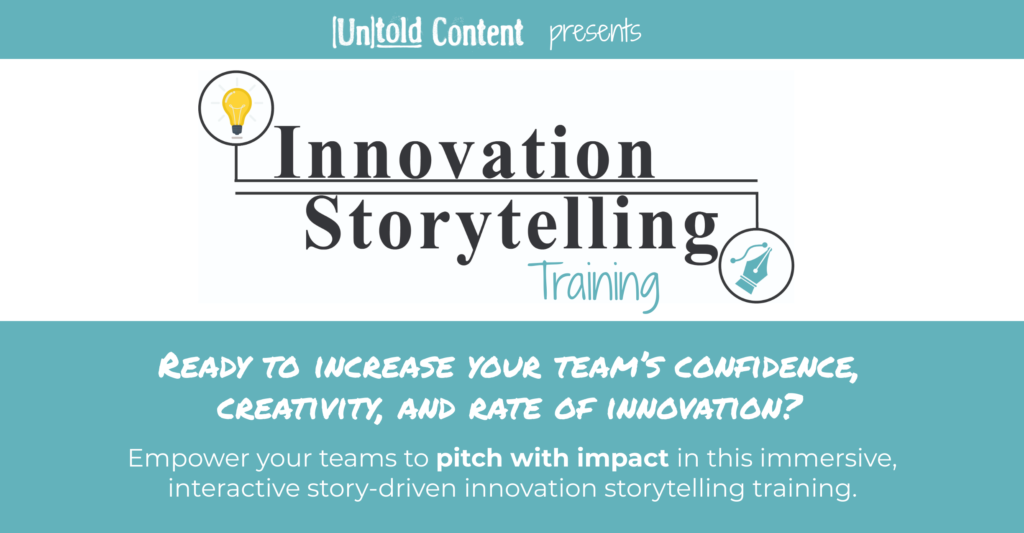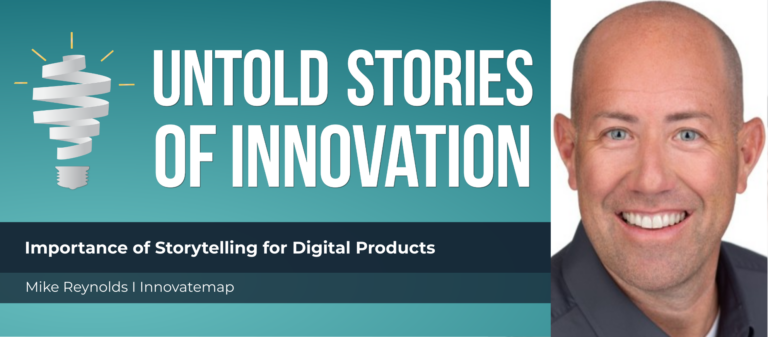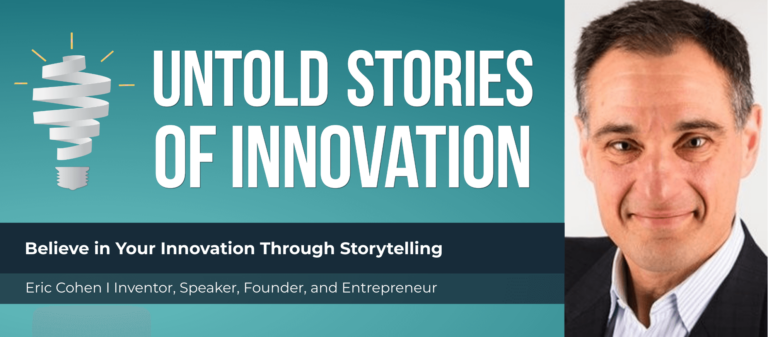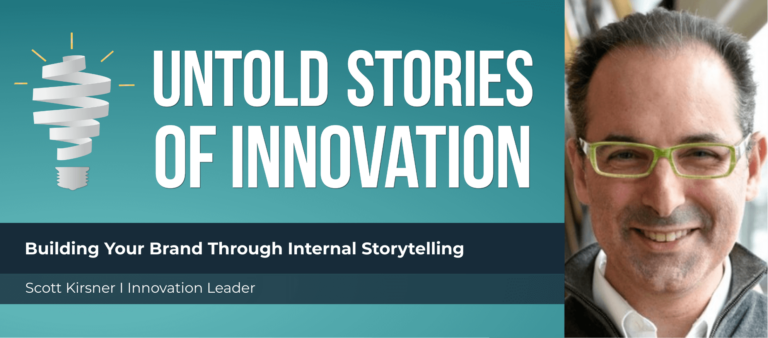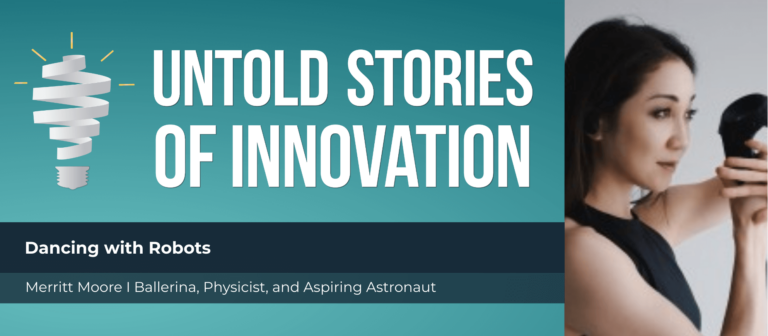Legacy Innovations with Dawn Stancavish
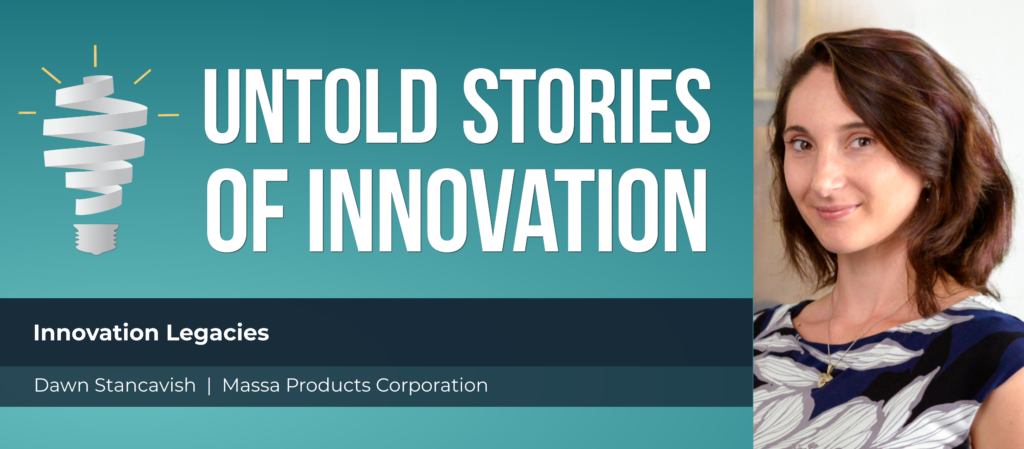
Legacy Innovations - Untold Stories of Innovation
“Our focus for new innovations is how can we go where no one’s gone before, as opposed to how can we make something better.” -Dawn Stancavish, CIO and COO of Massa Products Corporation
From today’s episode you’ll learn:
Why do stories matter to the innovation process? What values can be instilled in innovators who share stories? How do innovation leaders inspire creators to tell and share their success and failure stories?
We speak with Dawn Stancavish, CIO and COO of Massa Products Corporation, about Massa’s journey from World War II hydrophones to cutting-edge sonic innovation. As a family company, Massa’s growth-focused mission is cultivated by passing down and building upon knowledge from the founder of the field himself. We discuss Massa’s impact throughout history in Navy ships, movie theaters, and bowling alleys while also touching on the importance of failure and collaboration in innovation.
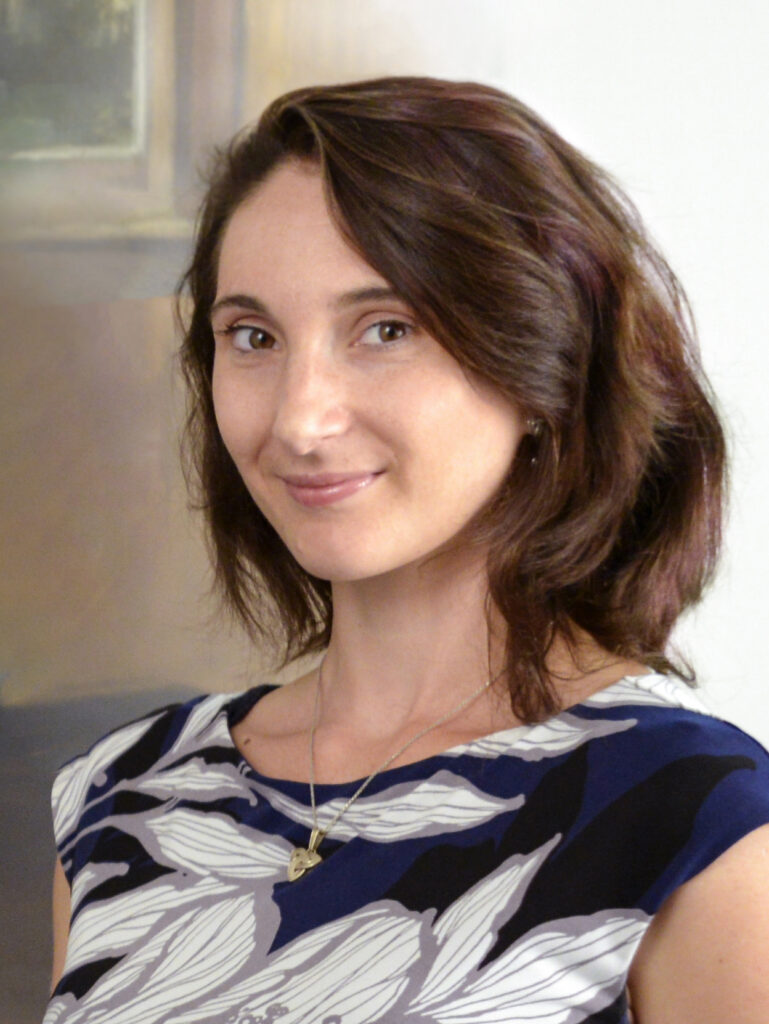
Dawn Stancavish is CIO and COO of Massa Products Corporation and is a proud third generation innovator in the family business. Dawn is a published writer, artist, and inventor, and yields all of her talents through the twists and turns of innovation. She works on development both internally and externally, serving as the liaison between consumer needs and the technical capabilities of Massa. As a leader in the company and a member of the Board of Directors, Dawn preserves and shares the family values and culture that are the foundation of Massa.
untoldcontent.com/trainings/innovation-storytelling-training
TRANSCRIPT – Legacy Innovations
This episode is powered by Untold Content’s innovation storytelling training. Increase buy in for your best ideas in this immersive and interactive, story-driven experience. Where your teams refine storytelling techniques for their latest projects, prototypes and pitches—and get inspired by 25 epic examples of impactful innovation stories. Learn more at https://untoldcontent.com/innovationstorytellingtraining-2/.
Katie: Welcome to Untold Stories of Innovation, where we amplify untold stories of insight, impact and innovation. Powered by Untold Content, I’m your host, Katie Trauth Taylor. Our guest today is Dawn Massa Stancavish. She is CIO and COO at Massa Products Corporation, where she leads a team with her father, Don Massa, who is President and CTO. Each generation at Massa has added a piece of themselves to the business. They work on electro acoustics and also ultrasonic sensors and many other applied acoustics products and services. Dawn, it is so wonderful to have you on the podcast to talk about how your corporation’s innovation stories have changed since your founding in 1945 — is that right?
Dawn: Yes. Thank you for having me. I’m happy to be here. Yes, we were founded in 1945 by my grandfather, Frank Massa, who was also an industry pioneer for electro acoustics. Before he founded the company, you know, he graduated from M.I.T. Swope Fellow with his master’s degree, and then he went off to work for Victor Talking Machine, which later became RCA Victor. And while he was there, he developed a lot of the key innovations in sound. And he met Harold Olson, who he coauthored the very first engineering textbook for taking sound as it’s heard and then applying it with engineering principles. So it’s called applied acoustics. So from there, they developed a lot of the fundamentals in audio, from microphones and loudspeakers to different military sound devices, telephones for ships and things of that nature. And then when he left there, he ended up going out west to Brush Development Center. When he was in Brush Development, he was the head of engineering there. And he first was working primarily with things like radios for cars, pickups, audio pickups and things of that nature. But then World War II started happening and he had already established himself as an engineer that is paramount in the design of all things acoustic. And the friend of his from his RCA days happened to be part of the Navy and asked him if he could help him out with something because they were trying to develop what is now called a hydrophone. But it wasn’t called that then. And my grandfather immediately knew how to make it so it will work underwater where this guy wasn’t able to get it to work properly. So he told his friend he’d take a look at it, asked his friend to send it to him. Went and talked to his boss at Brush and he said, no, Frank, don’t work for the Navy. You’ll never get anywhere because it takes so long with contracts and all this. So my grandfather felt bad, on his own time redesigned the item and sent it back to his friend. So then time goes on and the war is picking up. And as the war efforts were growing, the government cut off the use of vacuum tubes by commercial industry. And that was a big component that was necessary for all these, you know, developments that they were doing out of Brush. And they were at the moment when they’re trying to figure out how they’re going to, you know, close shop. My grandfather got a phone call from his friend that said, hey, Frank, you know, your now what we call a hydrophone works great. And he negotiated a multi-million dollar contract over the phone, went back to his boss and said, you know what? Maybe it’s time to work for the Navy. And when he did that, they — Brush shifted gears and did a lot of the development of all the hydrophones and sonars used in World War II, and my grandfather was at the forefront of all that. So through all of that experience, he decided that he wanted to start his own company. And so in 1945, that’s clearly, you know, after the war. But he was — his experience was as a developer, as one of the major people that helped redefine how sonar transducers are engineered and produced for use by the Navy. And he took that skill set and he started out just consulting and he was still in Cleveland at that time. So the company was founded in Cleveland. For five years he was consulting. And he had different family members working for him and friends he knew through, you know, his professional life. And when he was looking for a big enough place, because it was his dream to have a facility that he could not just design, but also incorporate all the lessons he’s learned, including, you know, how to produce something, a quality production piece. So he wanted a manufacturer, he wanted a big facility, and they needed to be able to have a test pond to do that. So he’s looking around for a place where he could have his own test pond and he could have his own building. And he had family still back here in the Boston area. And they said why don’t you come home, there’s a lot of water around here. So he did and he bought the land and he built the building. And we have a test pond here. And we’ve been in the same building since 1950. So it’s kind of a special year for us because it’s 75 years of the founding of the company, but it’s 70 years at this location.
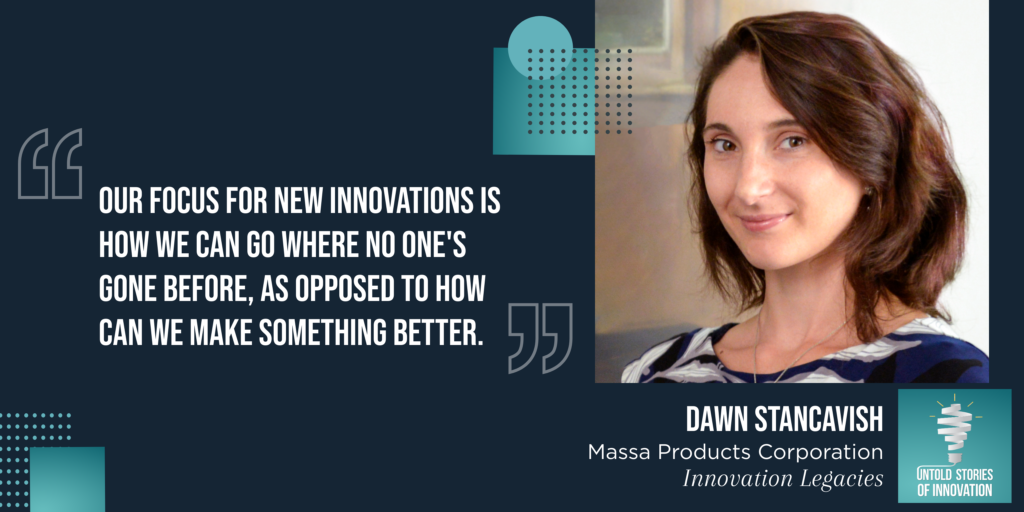
Katie: Wow, incredible. It’s amazing to see how a business owner’s journey begins, especially in the middle of a global crisis the way that it did for him. And you know what’s amazing to me about Massa and the kinds of — sort of the history of what you’ve been able to impact, if it weren’t for the innovations that your grandfather sparked, we would not have sound in movies the way that we understand it. We wouldn’t have quality sound recordings in music and broadcasting. And it’s why we also have advanced military sonars like what you described starting all the way back in World War II. That’s an amazing amount of breadth in terms of where this company has made an impact.
Dawn: Yeah. So it’s something that is really important, that is a part of our culture, too. There were things that were really key to him that were important. And he founded the business on those values, if you will. So, you know, the need to have a quality product, the need to understand something and think outside of the box are all things that have always been important to Massa. And the stories of the challenges have also been important. And you mentioned the sound of movies. I didn’t even talk about that. You know, when he was at RCA, that’s when the Great Depression was going on. And the only department that wasn’t cut was his group’s because they were working on the sound that was used for both recording the audio for films and for the music industry. And then also it was the speakers that were put into the movie theaters. And that was one of the only affordable luxuries that anyone could afford during the Great Depression. So it was — it’s interesting that even before our founding in times where a lot of difficulty was going on in the world, my grandfather was in the right place at the right time and had the creative thinking to be able to overcome challenges. And I feel like that aspect is still true for us today. And another thing, you know, he was born in an Italian immigrant family in Boston, and he learned English by going to school. And this was, you know, he was born in 1906. So he was in the north end at a time where Italians were very much discriminated against. You know, he didn’t pass the language of Italian down through the family, like a lot of families that have come after that era have, because he wanted to assimilate. And in fact, he was born Francesco Enrico Antonio Massa. But he changed his name to Frank, Frank Massa because he wanted to be American. He wanted to be seen as somebody that could rise through his ideas, his thoughts and his actions and, you know, what he did. And he wanted to make himself opposed to be described or defined based on where he came from. And, you know, we judge people by what they do, not anything else. It’s can you do your job? Are you good at it? That’s awesome. We love our job and we love to hire people that are really excellent and passionate about their jobs.
Katie: I would love to know — that story is incredible. Could you share with us as his granddaughter, when did you come to realize those aspects of his background and some of the bias that he was positioned that he needed to overcome? Since it didn’t come from him or didn’t come from stories that he passed down necessarily, at what point in your life did you realize, wow he actually had this whole other challenge that he really didn’t talk much about?
Dawn: You know, I’ve never had the opportunity to ask him point blank. He died right before I turned 10. So it wasn’t like, you know, I was at the level where I was having these kinds of conversations with him. So if he were around today, I would actually, you know, love to hear a little bit more about what he actually experienced, because I don’t know anything about that. And he worked hard. And as a woman, you know, I’ve experienced some strange things here and there. I’ve been to trade shows and I’ve been to meetings where people don’t acknowledge that I might be the one in charge or the senior person in the room. I’ve experienced that. But it doesn’t matter what those people think, because the reality is what the reality is. And, you know, it’s just interesting. It’s one of those side thoughts that, you know, seems relevant of the times. But the message that he taught me is that just stay focused and do what you need to do.
Katie: Absolutely. I would love to hear, you know, if we zoom ahead a little bit. Today, you’re running the company with your father. Could you tell us a little bit about how each of you have added different strengths, different perspectives to the strategic directions of the company over the years?
Dawn: Yes. So let me just start with the fact that my grandfather started mainly doing sonar transducers. As my father — before him actually, his brother worked here, my Uncle Frankie. But he died before I was born in a terrible accident. So he also was an engineer and they did a lot of the sonar transducers. And then there was a period where the business was not sold entirely, but partially sold, where a percentage ownership was owned by another company. And at that time, there were some things that weren’t going on so well. My father was involved, he was working here with my grandfather. And when they didn’t like what was going on, they decided, you know what? We’re gonna go off on our own and do things our way because you’re starting to tear our company down and pull our name down with you. And we don’t want that to happen. So they actually left this building that we’re in now and went to Randolph for a little bit, started another company that was in parallel, still Massa. So it was — there were two Massas running at the same time with a slight difference in the name. And then when the massive division was not doing so well by the people that were running it, my grandfather and my father still owned all the patents. So the people that were not doing well with the company and were screwing up, they were starting to go bankrupt. At the same time, they were guilty of patent infringement. So my dad and my grandfather sued them. And at the time, it was kind of funny because they’re like, yeah, sure, the old man and the young kid, they’re going to run out and start their own company. Well they did, they did well. They got a few deals that they were working on because people would rather go with them for their innovations and their ideas. And then these other people were ruining things. So my dad and my grandfather won, kicked them out, came back to the building. And that’s the birth of Massa Products Corporation. So, it’s always been Massa. It’s always been my family involved. But there was a small period where they overcame this big challenge. And right at that same time, that’s when my father became president. And he was very much involved with some of the big deals that we had at the time. And it’s where we started to move away from just transducers and do a little bit more in systems. So a system is like when the transducers are paired with electronics to become a more cohesive system. And sometimes that’s a sensor, sometimes that’s a whole array with the electronics and whatever. So one of the deals that they had that was his innovation was the automatic bowling scoring system for AMF, where we designed that and manufactured it and outfitted all of those bowling alleys. So it’s hard to imagine that the same company that revolutionized sonar transducer design through, you know, history also did bowling alleys. And there was no scoring system before us. We also at the same time we had a design for the first ultrasonic intrusion alarm that didn’t have any false alarms. So we were selling that at the same time. So those two things were pretty big that came out of that era. And then that just led and grew to other things, because once you opened the door to doing a little bit more, you open yourself to business. And what’s really interesting about that is that the spirit of innovation has been with us from the beginning. It’s shifted a bit, but that’s what innovation does. You know, we’ve always stayed strong with what our core capabilities are. But we’ve grown upon that so that what our core capabilities are have also grown.
Katie: Yes, exactly. Yes. It’s really — the incredible opportunity when you look at a company that’s 75 years old is to see the places where you did pivot or expand and also some of the lessons learned along the way. I think most companies that we see that are this, you know, that have as much history as Massa does, they do have moments of acquisition or transfer and moving back and pursuing certain new opportunities and then getting back to their roots, and it’s fascinating. I would love to hear — do you tell quite a few internal stories of innovation in terms of keeping that history and that institutional knowledge present with new employees?
Dawn: Yes. So that’s a huge piece. So let me just continue a little because where I was going with my answer, it totally ties into that, because, you know, my dad brought in a lot more systems and then I came in. I actually, after I graduated from high school, I wasn’t sure exactly what I wanted to do. I thought I knew, but I didn’t. And I changed my major a few times. And I studied lots of different things. And all of those things I brought back here. And I actually, after I graduated in New Jersey from Fairleigh, from Fairleigh Dickinson University with my master’s in psychology with a focus on systems dynamics, I had two children, I was home. And my dad was saying, you know, it’s a family company. Why don’t you come and, you know, join us on the board. So I was coming up for board meetings and I learned a lot. And before that, I did study some engineering, enough to know that I’m not an engineer, enough to know also what we can and cannot do and what things fit for our capabilities. And what I realized when I was on the board was that we had some problems here. And then I decided, you know what? There’s also a lot of really special things here that I wanna make sure I preserve. And I have two boys. They’re both very science minded and creative. And I’m thinking, oh, my God, these guys might grow up and be engineers or, you know, they might complement each other the way my father and I complement each other, where my dad’s kind of like, you know, he’s a brilliant scientist, he gets really focused on whatever he’s working on, but sometimes because he’s so in the weeds as to what each program is, he’s not aligned with where can the business go. And I realized, oh my gosh, that’s my strength. So I came aboard and I started — the company where it was, we had a management team in place that didn’t quite understand innovation the way this company needed innovation to be understood. And what they did was they saw our past innovations as just being that, something that was in the past, opposed to something that is still the life blood and necessity for who we are. So their focus for how they wanted to have new innovations were more along the lines of “me too” products. And they’d look around to see what other people have and then say, OK, well, how can we make that better, opposed to how can we go where no one’s gone before? And I realized that and I started working here and I saw that even more and more and more. And then I also realized that there was a culture here that I knew from my growing up and my history with the company that was not what newer employees knew or experienced. But some of the long term employees saw that that was what we used to have and no longer had. And it became a big problem. So we tried to focus on culture and train people because we’re a family company and we care a lot about every employee and their families and everything. We never would want to harm anybody by letting them go without giving them a fair chance. So we really tried for about three years to pull these people up and get them in line with who we are, where we’ve come from, what we’re capable of doing and where we would like to go. And they just couldn’t, they weren’t capable of understanding that. And the culture here at that time was kind of tense. And we weren’t able to achieve things. And there was a lot of trouble between the departments, opposed to having everybody cohesive and working together. And we decided, you know what, we just can’t do this anymore. And we let the two people go that were a big source of the problem. And as soon as we did that, we had put all our energy into culture up to that point. And then we realized, you know what, the culture corrected itself. People were automatically on board and things started to go smoother. And there were a few other people that were still here from that era, and they naturally started to not be here anymore either. And it wasn’t a bad thing. It was a very healthy thing. Some people left on their own. Some people were let go. But it was for their happiness and for our health. So what we found was by focusing on culture internally, allows you to receive whatever business you have coming your way and on the horizon. At the time, we knew we had to clean house because we had a lot of potential and a lot of opportunities that we wanted to go after. And we knew we couldn’t do that until making sure that we were strong enough internally to do so. So once we did that and we started going after new business, everything started to kind of fall in place. And we’re very fortunate that we’ve got a really strong team here. We have a lot of people that have dedicated their entire professional lives to us. Also, you know, once you set something in place like with clarity and goals, you find that other things just start to happen that fit that goal. It’s a really amazing phenomenon. And if you read about, you know, other people, and I’m sure you’ve interviewed several people, they’ll tell you the same thing. Once you have that clarity, it’s like, you know what to do and everything just happens. That’s not true for every detail. But, you know, for the big things where it matters, that’s what we experienced. And we had some people that used to work here that went off and did other things, and then all of a sudden they came back. So we have people that are so loyal and so wonderful here. And we really have a happy environment. We’ve changed the layout of our engineering department. We made everything stronger focused. We started hiring co-ops again. And we really grew, both from a business standpoint and from an internal standpoint. And now through the whole COVID craziness, we’ve had people that never worked remotely before working remote. But we know that everyone’s doing what they need to be doing, where it would have been much harder to manage that if we had a different team. So we’re very, very happy right now. We’ve been strong. We’ve been moving forward. We’ve been essential. We’ve been open this whole time. We’ve been putting more precautions in place for as far as safety and masks, cleaning surfaces, all of that stuff to make sure everybody’s safe and doing what they need to do. We’ve been in full production this entire time and luckily, you know, no one’s been been sick either. And if anyone thought that they were, we would like go above and beyond to make sure, like, well, why don’t you take a couple days off, check with your doctor and then come back. And we’ve been very careful with all of that. And we’ve been very fortunate that we’ve had no cases, thank God, up to this point. And I hope that we don’t have any. So, it’s been a wild ride.
Katie: Yes, oh my goodness. So there’s so many different ways we could take the conversation from here. But I think what I’m most — first of all, thank you for all of your essential business during this crisis and the pandemic. And I’m so glad to hear that everyone is healthy and safe and that you’re able to implement new workflows and all of that. In terms of culture, I would love to hear your perspective, you know, where do you hear story play a role in the creation of an innovation culture? Because it sounds as though in this evolution of the company, more recently, as you shifted the cultural dynamic, you’ve been able to create a culture that’s much more open to thinking innovatively, especially not just in regards to incremental innovation or sort of copycat better, you know, improvement style innovation, but breakthrough as well. So could you tell us a little bit about story and the way that that’s maybe played a role in creating innovation?
Dawn: Yeah. So it’s really — for me as third generation, I value everything that I’ve learned in my life and everything I have learned from my family. And I was taking a peek at the company from many different perspectives. I think back to being a child and being a part of — you know, my family’s different than a lot of families. When we would have business dinners when I was a kid with certain people from the Navy, certain people that were our reps from D.C. or other countries. We had all kinds of business dealings where sometimes the families would also get involved. So we would go out to dinner and I would go, you know, as a kid. Or I’d join on a business trip and we would do some of the stuff would be business and where I wouldn’t be a part of. But then for the dinners, the families would always be a part of things. And whenever I asked any kind of question, in my family, it wasn’t like, you know, I was just a kid or shut out. They loved that. And my grandfather loved it. My father loved it. And they’d tell me anything I wanted to know at any time. And I was taught that my questions are meaningful and learning is important and who we are as important. They always had that inclusion before I could even realize the importance of something like that. But I did realize that other families didn’t have that same attitude because I saw it with friends and other, you know, other branches of family where not everybody was always welcome when it was time for the adults to talk. Sometimes the kids needed to go, right. So I feel like that was one perspective. Another perspective is as I grew up and tried these different things, and then I was looking at the top level from the board, I had that perspective and then I had the perspective of an employee. And I also had the perspective, okay, I’m third generation, where do I want this to go? And it’s kind of a culmination of all of those things that made me think, you know what? I understand the founders mentality. Dad’s still here. He understands that. And I had a lot of chats with him privately about how I would like to see the company grow into the future. And I’d bounce those ideas off of him. And he loved it. And he got all energized and excited. And my dad’s in his 70s. He’s still here. You know, so every moment with him, I’m learning from him and it’s so meaningful. And that’s part of what happened to me when I was living in New Jersey when I was coming up for the board meetings. And when my first born was about he graduated kindergarten, was going to go into first grade, and I said you know what, it’s time to move. And my husband started his own business, so it worked out perfectly, so he could do that from anywhere. And I was like, I really want to — I really want this. It was a drive that I can’t even explain. It was just something I had to do. And I’ve loved every moment and every single thing that seemed unrelated started to pull into place. So all my creativity in terms of, you know, I studied, you know, art for a while. I did engineering for a while, and then I finished up with psychology. And then I went to Harvard for an executive class, I got a certificate in finance. So I have all of these little pieces that I use on a daily basis. So we look at things creatively here. I said, I want to focus — you know, we built this business. Our founders mentality is, it doesn’t matter if there’s something out there, we can go where no one else can go. We understand this core technology better than anybody. Nobody’s designing transducers today the way we do. And nobody has the lineage that we have in terms of the founder of the field passed on his — like almost like an apprentice would learn in the olden days — craft. Right. So we have that cultivated here. We have over 165 U.S. patents.
Katie: That’s amazing.
Dawn: We’re still adding to that number. Right now, we’re in the process of two major commercial deals that — we’re under MNDAs — that are for breakthrough technologies. And when they are released, they’re going to be co-branded with the Massa logo, as well as our customer and partner’s logo on their items that these things will be featured. So we’re very excited for these upcoming things because they’re very different fields and very different places than — that ultrasonics have never gone before and sonar and transducers and all of this, you know. So, we’re super excited about the innovations and we’ve been focusing on that since I’ve come back into the role and really taking the company to a place where our team is strong. We love co-ops, co-op students, because acoustic engineering, electro acoustic engineering is not a common major. It does exist. But it’s not something that — you know, the way we do things is different than how our competitors do things. And there’s so much that’s here that we view as our IP and our knowledge. And we like to be able to have someone that has the basic engineering fundamentals, that has the creative capability so that we can cultivate them to learn how we do things and we can then create new things. And it’s our whole team that’s strong. We have acoustic engineers, we have production engineers, we have electronic engineers. And then we have a production line and we have, you know, the basic business people too.
Katie: Wow. You know, what I love is that story about how your grandfather and your father always pulled you in to the business strategy conversations and made your questions feel valid. That seems to me like a powerful, you know, sort of lesson that you learned early in life the value that can come from that. And now you’ve instilled that in your culture and also, you know, trying to create structures like your co-op programs to continue to instill that. I know that’s a lesson I will continue to take into my life as a mother, but also as a mentor to other people who are looking to grow in their professional lives. So I’m grateful for that story that you shared and that vision of you sitting in on those dinners and trying to, you know, really be part of the conversation.
Dawn: Yeah, it’s one of those things that you don’t realize when you’re going through it, but you look back and you’re like, wow. That’s like learning a language, right, it’s you’re learning it, but you don’t realize it. It’s not formal, but it’s — I was taught how to behave and how to talk with certain types of people from a very young age where other people don’t always get that type of an exposure. So I’m very grateful for that.
Katie: Yes, definitely. Dawn, I’m so grateful that we’ve had this time to talk on the podcast. As we wrap up our conversation, I’d love to know if you have advice to innovators in sonic engineering or beyond, you know, in terms of getting their big ideas across and helping to create good storytelling around their innovation work.
Dawn: Yeah, I think that what I’ve learned is that the challenges that a company has to overcome are just as important to pass on as the successes. And it’s really important to teach both because you need to have a business filled with people that truly believe in who you are, what you’re capable of and where you’re going. And they need to be able to feel like they’re a value added member of the team. Because without that, you don’t have innovation, you don’t have growth and you don’t have success. And with that, you have everything that’s wonderful. And you have people in a place that enjoy their job. They love their job. It doesn’t feel like work. You have fun with everybody. While there are challenging times, of course, and everybody has things about their job that might not be their favorite thing to do. But overall, you have longevity that way. You have loyalty that way. You have people who love what they do that way. And that’s how you can get the best designs. And if there is trouble in your story, if there is a problem that happens with your group, as you’re learning something or trying to do an innovation, you fail, you have to process that failure properly so that people learn from it, opposed to feel reprimanded by it or let go by it. You know, you don’t want to fire somebody because they made a mistake. You want to learn from that. Obviously, there are certain situations where you’ve given it your all and it’s not the right fit, and that’s a different situation. But you have to keep the company goals in mind and your team engaged. And I think that that’s what gives you a setup, if you will, for success.
Katie: Yes, absolutely. Thank you, Dawn, so much for that advice. I think that’s perfect. Thank you for being on the podcast. You can find out more about Massa at — is it Massa.com? Is that right?
Dawn: That’s right. Massa.com.
Katie: Perfect. Dawn, thank you so much. And I hope to talk to you soon.
Dawn: Thank you very much. I enjoyed talking with you. Wonderful podcast. Thank you.
Katie: Thanks for listening to this week’s episode. Be sure to follow us on social media and add your voice to the conversation. You can find us at Untold Content.
You can listen to more episodes of Untold Stories of Innovation Podcast.
*Interviews are not endorsements of individuals or businesses.
